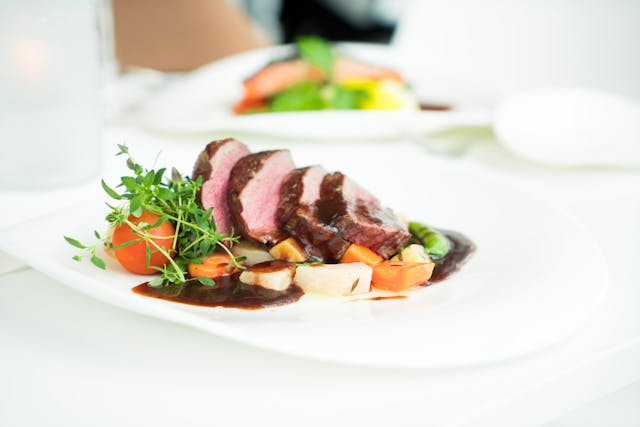Proper food storage is essential for maintaining health, ensuring food safety, and preserving the quality and nutritional content of food. By following general principles and best practices for storing food, we can prevent foodborne illnesses, extend the shelf life of fresh produce and meat, and reduce food waste. This article explores the importance of proper food storage and provides practical tips for keeping your kitchen safe and organized.
General Principles of Food Storage
Understanding the basic principles of food storage is crucial for ensuring food safety. Here are some key guidelines:
- Temperature Control: Store perishable foods at the correct temperatures. Refrigerators should be set at or below 40°F (4°C), and freezers should be at 0°F (-18°C) or lower.
- Proper Packaging: Use airtight containers to store food. This helps prevent contamination and keeps food fresh for longer.
- First In, First Out (FIFO): Rotate your food supplies so that older items are used before newer ones. This reduces the risk of spoilage and food waste.
- Cleanliness: Maintain a clean kitchen environment to avoid cross-contamination and the spread of bacteria.
Preventing Foodborne Illnesses
Foodborne illnesses are often caused by improper food storage. By following proper storage practices, we can significantly reduce the risk of these illnesses. Key practices include:
- Refrigerating Promptly: Store perishable foods in the refrigerator within two hours of purchase or preparation.
- Avoiding Cross-Contamination: Keep raw meat, poultry, and seafood separate from other foods. Use separate cutting boards and utensils for these items.
- Labeling and Dating: Clearly label and date stored food items to ensure they are consumed before they spoil.
Extending the Shelf Life of Fresh Produce and Meat
Proper storage techniques can extend the shelf life of fresh produce and meat, allowing you to enjoy them at their best quality.
- Store fruits and vegetables in the refrigerator, but be aware that some items, like bananas and tomatoes, should be kept at room temperature until they ripen.
- Wrap leafy greens in a damp paper towel and place them in a perforated plastic bag to keep them fresh.
- Store fresh meat in the coldest part of the refrigerator, typically on the bottom shelf. For longer storage, freeze meat in airtight packaging.
- When freezing meat, use airtight packaging to prevent freezer burn. Label packages with the date to keep track of storage time.
Safe Meat Storage: Best Practices for Your Kitchen
Improper meat storage can lead to the growth of harmful bacteria such as Salmonella, E. coli, and Listeria. These bacteria can cause severe foodborne illnesses, with symptoms ranging from stomach cramps and diarrhea to more serious health complications. To prevent these risks, it’s essential to store meat correctly and follow safety guidelines.
Storing Different Types of Meat
Proper storage varies depending on the type of meat:
- Beef: Store beef in the refrigerator at 32°F to 36°F (0°C to 2°C). For long-term storage, freeze beef at 0°F (-18°C).
- Chicken and Poultry: Keep chicken and poultry in the refrigerator at 32°F to 36°F (0°C to 2°C). Freeze them at 0°F (-18°C) for extended storage.
- Pork: Store pork in the refrigerator at 32°F to 36°F (0°C to 2°C). Freeze it at 0°F (-18°C) to maintain quality over time.
- Fish: Fresh fish should be stored in the refrigerator at 32°F to 34°F (0°C to 1°C) and consumed within a few days. For longer storage, freeze fish at 0°F (-18°C).
Tips for Safe Meat Storage
- Refrigeration: Store meat on the bottom shelf of the refrigerator to prevent juices from dripping onto other foods.
- Freezing: When freezing meat, wrap it tightly in plastic wrap, aluminum foil, or freezer paper to prevent freezer burn. Use vacuum-sealed bags for optimal storage.
- Thawing: Thaw frozen meat in the refrigerator, not at room temperature. This ensures the meat stays at a safe temperature during the thawing process.
Proper storage not only ensures food safety but also preserves the nutritional content of meat and other foods. Vitamins and minerals can degrade if food is not stored correctly. By keeping food at the right temperature and using appropriate packaging, you can maintain its nutritional value and enjoy its health benefits. Remember to find your favorite cuts on our list of fresh meat — https://www.gourmetfoodstore.com/wagyu-beef-and-specialty-meats/freshfrozen-meats-01025 and ensure you store them correctly to maximize their quality and flavor.
Refrigeration vs. Freezing: Which is Better for Meat Storage?
Both refrigeration and freezing are effective methods for storing meat, but each has its advantages and best practices.
Refrigeration
- Advantages: Refrigeration is suitable for short-term storage and helps maintain the freshness and quality of meat.
- Best Practices: Keep the refrigerator at 32°F to 36°F (0°C to 2°C) and store meat in airtight containers to prevent contamination.
Freezing
- Advantages: Freezing is ideal for long-term storage and can preserve meat for several months.
- Best Practices: Freeze meat at 0°F (-18°C) in airtight packaging. Label and date the packages to keep track of storage time. When ready to use, thaw meat in the refrigerator to ensure it stays at a safe temperature.
Proper food storage is crucial for maintaining health, preventing foodborne illnesses, and preserving the quality and nutritional content of food. By following best practices for storing fresh produce and meat, we can enjoy safe, nutritious, and delicious meals.







